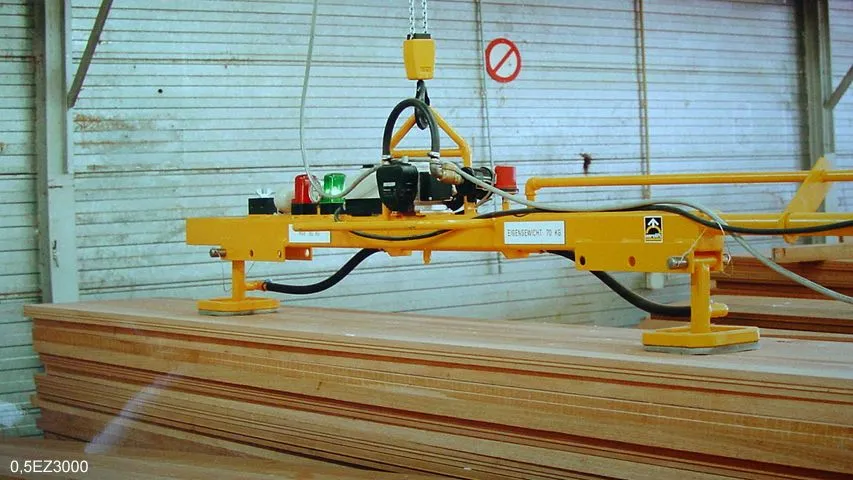In today’s fast-paced industrial and manufacturing environments, efficient material transfer is vital to maintain productivity, reduce labor costs, and ensure workplace safety. One of the most effective and increasingly popular methods for moving materials—especially powders, granules, and small components—is vacuum material handling. This technology has revolutionized how materials are transferred within factories, warehouses, laboratories, and cleanrooms, offering speed, precision, and hygiene.
This article explores the fundamentals of vacuum material handling systems, including how they work, their key components, benefits, common applications, and what to consider when implementing them in your facility.
What Is Vacuum Material Handling?
Vacuum material handling refers to the use of vacuum-based technology to lift, transport, and deposit materials without direct manual handling or mechanical contact. These systems utilize negative air pressure (a vacuum) to move items safely and efficiently from one point to another.
The technology is particularly effective for handling bulk materials such as powders, resins, capsules, small parts, and other lightweight items. It is used extensively in industries such as food processing, pharmaceuticals, plastics, chemicals, and electronics, where contamination control, speed, and precision are essential.
How Vacuum Material Handling Systems Work
Vacuum material handling systems operate on a simple yet powerful principle: air pressure. When air is evacuated from a system (creating a vacuum), atmospheric pressure pushes material into the system. Here's a step-by-step overview of how a typical vacuum material handling system functions:
-
Vacuum Generation
A vacuum pump or blower creates a vacuum in a sealed pipeline or chamber. -
Material Intake
Material enters the system through an intake point, often using suction nozzles, feed hoppers, or wands. The vacuum pressure draws the material into the system. -
Transport
The material is conveyed through tubing or piping to its destination, such as a storage bin, hopper, mixer, or packaging line. -
Separation and Discharge
At the destination, filters and cyclones separate the material from the air. The material is then deposited, while the air is exhausted or filtered and recycled.
This closed-loop process ensures that materials are moved with minimal contamination, waste, or environmental exposure.
Key Components of a Vacuum Material Handling System
While system design can vary based on application, most vacuum material handling systems include the following components:
-
Vacuum Generator: The heart of the system, often a vacuum pump or compressed air-driven venturi.
-
Transfer Line: Pipes or flexible hoses through which the material is transported.
-
Feed Point: A suction nozzle, pick-up wand, or feed hopper where material enters the system.
-
Receiver: A vacuum hopper or chamber that collects and discharges the material.
-
Filter or Separator: Prevents dust and particles from entering the vacuum generator.
-
Control System: Manages timing, pressure, sequencing, and automation functions.
These components work in coordination to ensure safe, clean, and reliable material transfer.
Advantages of Vacuum Material Handling
The growing popularity of vacuum material handling stems from the multiple advantages it offers over manual handling or traditional mechanical systems such as belt conveyors or bucket elevators.
1. Clean and Contamination-Free Transfer
Because the system is closed and filtered, the risk of product contamination is greatly reduced. This makes it ideal for applications with strict hygiene requirements, such as food and pharmaceutical production.
2. Reduced Labor Costs and Ergonomic Benefits
Manual lifting and transporting of materials can be labor-intensive and physically taxing. Vacuum systems automate this process, reducing the need for manual labor and minimizing workplace injuries.
3. Space-Saving Design
Vacuum lines can be routed through ceilings, walls, or narrow spaces, making them more adaptable to complex facility layouts than bulky conveyors.
4. Dust Control and Improved Air Quality
Integrated filters capture airborne particles, improving the cleanliness of the work environment and reducing the need for external dust collection systems.
5. Low Maintenance
With fewer moving parts than mechanical conveyors, vacuum material handling systems require less maintenance and experience fewer breakdowns.
Common Applications
Vacuum material handling is used in a wide range of industries and processes. Some common examples include:
-
Pharmaceuticals: Transporting tablets, powders, and capsules without cross-contamination.
-
Food Processing: Handling flour, sugar, spices, and ingredients in a hygienic environment.
-
Plastics: Feeding plastic pellets or resin to molding machines.
-
Chemicals: Transferring corrosive or hazardous powders safely.
-
Electronics: Handling delicate or electrostatically sensitive components.
Its versatility makes vacuum material handling an attractive solution for any industry focused on precision, cleanliness, and efficiency.
Considerations When Choosing a System
When selecting a vacuum material handling system, several factors should be evaluated:
-
Material Characteristics: The size, weight, flowability, and abrasiveness of the material.
-
Transfer Distance and Height: Longer distances or vertical lifts may require more powerful vacuum generators.
-
Batch or Continuous Operation: Decide whether you need intermittent transfers or a constant material flow.
-
Hygienic Requirements: Food-grade or pharmaceutical systems must meet strict regulatory standards.
-
Facility Layout: Assess how the system will be integrated into your existing operations.
Working with an experienced supplier or integrator is critical to designing a system tailored to your specific needs.
Conclusion
Vacuum material handling is a powerful and efficient solution for transporting materials in a wide variety of industrial environments. Its ability to offer clean, controlled, and labor-saving movement of bulk materials has made it a key technology in modern manufacturing and processing.





